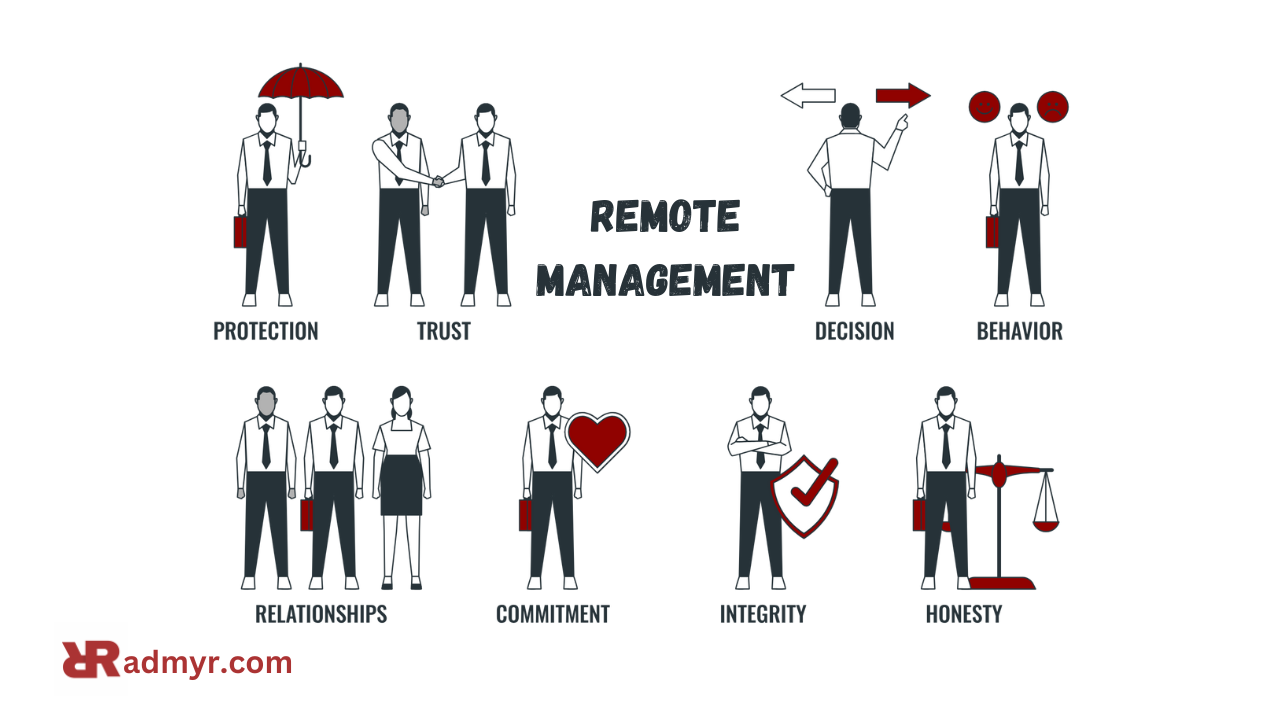Your cart is currently empty!
High-Impact Remote Management: Strategies for Leading Teams Effectively

The rise of remote work has transformed the way businesses operate, making remote management a critical skill for leaders. While working remotely offers flexibility and access to global talent, it also comes with challenges such as communication barriers, employee engagement issues, and performance monitoring difficulties. The key question is: How can leaders manage remote teams effectively while maintaining high productivity and motivation?
This article explores proven strategies for high-impact remote management, helping you build a cohesive, motivated, and efficient remote team. Whether you’re an experienced leader or new to managing remotely, these insights will help you navigate the challenges and maximize the benefits of remote work.
The Challenges of Remote Team Management
Before diving into strategies, it’s essential to understand the common obstacles that leaders face when managing remote teams:
- Communication Barriers: Without in-person interactions, messages can be misunderstood, leading to inefficiencies.
- Lack of Engagement: Remote employees may feel isolated, which can affect morale and productivity.
- Time Zone Differences: Coordinating across different time zones can delay decision-making and collaboration.
- Performance Tracking: Without direct supervision, monitoring employee performance becomes more challenging.
- Work-Life Balance Issues: Employees may struggle with separating work from personal life, leading to burnout.
Understanding these challenges is the first step in crafting a strategy for remote workforce success.
Essential Strategies for High-Impact Remote Management
1. Establish Clear and Consistent Communication
Effective communication is the foundation of successful remote management. Without a structured communication plan, remote teams can quickly become disengaged or confused about their responsibilities. To prevent this:
- Use a mix of synchronous (real-time) and asynchronous (delayed response) communication tools.
- Schedule regular check-ins through video calls to maintain personal connections.
- Utilize platforms like Slack, Microsoft Teams, or Zoom for daily interactions.
- Set expectations for response times and preferred communication channels.
- Encourage open dialogue where employees feel comfortable voicing concerns or ideas.
2. Set Clear Goals and Expectations
Without clear direction, remote employees may struggle with prioritization. A well-defined goal-setting framework ensures accountability and keeps teams aligned.
- Implement SMART (Specific, Measurable, Achievable, Relevant, Time-bound) goals to track progress.
- Clearly define roles, responsibilities, and performance indicators.
- Use project management tools like Trello, Asana, or Monday.com to streamline workflows.
- Encourage autonomy while maintaining clear accountability standards.
3. Foster a Strong Remote Work Culture
A remote team culture is just as important as an in-office culture. Employees should feel connected to the company’s mission and values, even if they’re working from different locations.
- Organize virtual team-building activities to foster camaraderie.
- Celebrate team achievements and individual contributions.
- Provide opportunities for social interactions, such as virtual coffee breaks.
- Encourage informal chat groups for team bonding.
4. Leverage the Right Technology for Collaboration
Remote teams rely on technology to stay connected and productive. Choosing the right tools can enhance efficiency and streamline collaboration.
- Communication Tools: Slack, Zoom, Microsoft Teams
- Project Management Tools: Trello, Asana, ClickUp
- File Sharing & Documentation: Google Drive, Notion, Dropbox
- Time Management: Toggl, Clockify
- Employee Engagement: Donut (for Slack), Watercooler (for remote socializing)
5. Prioritize Employee Well-Being and Mental Health
Remote work can blur the line between personal and professional life, leading to stress and burnout. As a leader, supporting your employees’ well-being should be a top priority.
- Promote a healthy work-life balance by encouraging employees to set boundaries.
- Offer flexible work hours to accommodate different time zones and personal schedules.
- Provide access to mental health resources and wellness programs.
- Regularly check in on team members’ stress levels and workload.
6. Implement an Outcome-Based Performance Management System
Rather than focusing on how many hours employees work, shift your focus to results and impact. An outcome-driven approach promotes efficiency and empowers employees to work autonomously.
- Set clear KPIs (Key Performance Indicators) for individual and team performance.
- Use tools like 15Five, Lattice, or BambooHR to track employee progress.
- Conduct regular one-on-one meetings to provide feedback and support.
- Recognize and reward top performers to maintain motivation and job satisfaction.
7. Encourage Professional Development and Continuous Learning
Investing in employees’ growth leads to higher job satisfaction and retention rates. Even in a remote setting, providing learning opportunities is crucial.
- Offer access to online courses, workshops, and webinars.
- Set up mentorship programs where senior employees can guide newer team members.
- Provide a budget for skill development and industry certifications.
- Create a knowledge-sharing culture through internal training sessions.
8. Build Trust and Empower Your Team
Micromanaging is one of the biggest pitfalls of remote team leadership. Instead, focus on empowering employees by fostering trust and autonomy.
- Avoid excessive monitoring and give employees ownership of their tasks.
- Trust that employees will deliver quality work without constant supervision.
- Encourage employees to take initiative and suggest improvements.
- Lead by example—demonstrate reliability, transparency, and accountability.
9. Optimize Virtual Meetings for Productivity
Virtual meetings can either be a valuable tool or a productivity drain. Optimize your meetings by ensuring they are efficient and purposeful.
- Set a clear agenda and share it in advance.
- Keep meetings short and focused—limit unnecessary discussions.
- Encourage participation but avoid redundant conversations.
- Use tools like Miro or MURAL for interactive brainstorming sessions.
Conclusion
Mastering high-impact remote management requires a combination of clear communication, structured processes, and a people-first approach. By leveraging the right tools, setting clear expectations, and fostering a strong team culture, you can lead your remote team to success.
Remote management is not just about maintaining productivity—it’s about building a sustainable and thriving work environment where employees feel valued, engaged, and empowered. Start implementing these strategies today and take your remote leadership skills to the next level.
Looking to optimize your remote management approach? Start applying these best practices and watch your team’s performance soar!
Leave a Reply